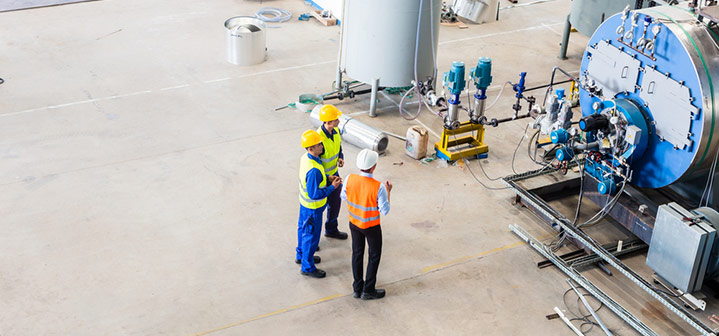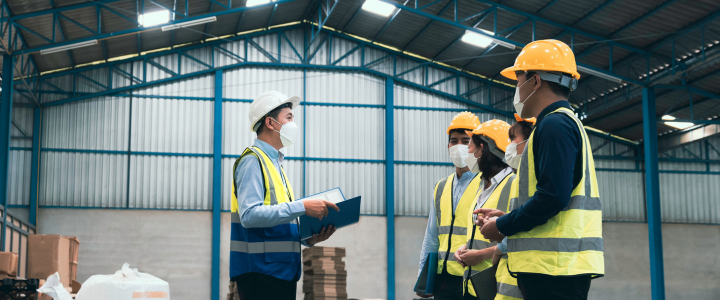Safety audits play a big role in maintaining a safe and healthy work environment, ensuring compliance with regulations, and preventing accidents and injuries. In this guide, the experts at Safety By Design will walk you through the steps to prepare your workplace for a safety audit.
Why Safety Audits Matter
Why care about safety audits? They’re not just bureaucratic hurdles. They’re important for identifying hazards, ensuring compliance, improving efficiency, and boosting morale by creating a safe environment for everyone.
So, what exactly is a workplace safety audit?
A safety audit is a systematic evaluation of the workplace to assess compliance with safety regulations, identify potential hazards, and ensure the effectiveness of safety measures. It involves reviewing safety protocols, conducting inspections, and analyzing safety records to proactively address risks and promote a safe working environment.
Start with a Self-Audit
Before the official audit, conduct an internal self-audit. This helps you catch issues early and shows your commitment to safety. Here’s how:
- Gather Your Team: Include representatives from different departments.
- Review Documentation: Check safety records, training logs, and incident reports.
- Inspect the Workplace: Walk through the site and look for potential hazards.
- Identify Gaps: Note areas needing improvement and create an action plan.

How to Prepare Your Workplace for a Safety Audit
When preparing for a safety evaluation, focus on key areas that can significantly impact workplace safety. Here’s a deeper dive into these critical areas:
1. Review Safety Policies and Procedures
First things first, it’s essential to review all your safety policies and procedures. Make sure they’re up-to-date and aligned with regulations. This includes everything from emergency action plans to personal protective equipment protocols. Take the time to ensure that everyone in your organization understands these policies and knows their role in maintaining a safe work environment.
2. Conduct a Thorough Safety Inspection
Next up, conduct a thorough safety inspection of your workplace. This involves identifying and addressing any potential hazards or non-compliance issues. Walk through each area of your facility with a critical eye, looking for anything that could risk employees’ health or safety. This might include everything from faulty machinery to trip hazards to improper storage of hazardous materials.
3. Provide Safety Training
Once you’ve identified any areas for improvement, it’s time to provide safety training to your employees. Make sure everyone is trained on safety procedures and protocols relevant to their role. This might include training on how to use safety equipment properly, how to respond to emergencies, and how to identify and report hazards. Remember, safety training isn’t a one-time thing – it should be an ongoing process to ensure everyone stays up-to-date on best practices.
4. Maintain Records
Keep accurate records of safety training, incident reports, and equipment maintenance. This documentation is crucial for demonstrating compliance during a safety audit. Make sure your records are organized and easily accessible so that you can quickly provide them if needed during the audit process.
5. Implement Corrective Actions
If the safety inspection uncovers any issues or areas of non-compliance, it’s essential to address them promptly. Implement corrective actions to fix the problems and prevent them from happening again. This might involve repairing faulty equipment, updating safety procedures, and providing additional workplace safety training to employees.
6. Communicate with Employees
Keeping your team informed and engaged throughout the workplace safety audit process is a must. Communicate with employees about the audit process, why it’s important, and what they can do to help ensure a successful outcome. Encourage them to report any safety concerns they observe and make them feel like active participants in maintaining a safe work environment. This is where having a safety committee can be beneficial.
7. Review Previous Audit Findings
Finally, take the time to review any findings from previous workplace safety audits. Learn from past mistakes and use them as an opportunity to improve your safety processes moving forward. By continually striving to enhance workplace safety, you can create a work environment where everyone feels safe, valued, and empowered.

Post-Audit Actions
Following a workplace safety audit, proactive follow-up is essential to address identified issues and drive continuous improvement. Here’s how to ensure effective post-audit actions:
- Root Cause Analysis: Conduct thorough investigations to identify the root causes of any safety deficiencies identified during the audit.
- Corrective Action Plans: Develop comprehensive corrective action plans outlining specific steps, responsibilities, and timelines for addressing identified issues.
- Performance Monitoring: Implement systems for monitoring and tracking the progress of corrective actions to ensure timely completion and effectiveness.
- Continuous Improvement: Foster a safety culture of constant improvement by soliciting feedback from employees, evaluating the effectiveness of implemented changes, and making adjustments as needed to further improve workplace safety.
Contact Safety by Design for Expert Guidance
Need a hand getting ready for your next workplace safety audit? Contact Safety by Design! Our experts in Houston have years of experience in helping businesses like yours navigate the complexities of workplace safety. Let’s work together to create a safer work environment for your team.
Give us a call today or visit our website to learn more about our comprehensive safety services.



